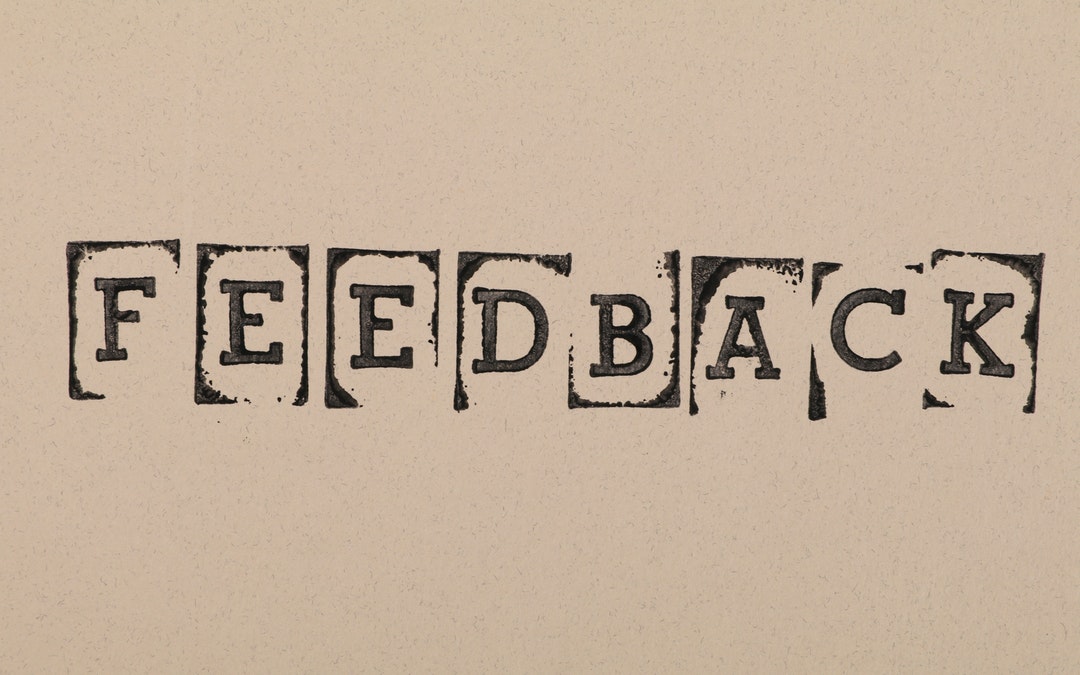Learning how to give negative feedback is an important skill for any leader or manager. After all, no one is perfect and there will always be room for improvement in anything we do.
However, giving feedback is not always easy. It can be challenging to find the right words and deliver feedback in a way that is helpful, not hurtful. This is where understanding your own strengths can make a significant difference. By taking the HIGH5 strengths assessment, you can gain insights into your natural talents, such as communication style or empathy, which can greatly enhance your ability to provide constructive feedback. Knowing your strengths allows you to leverage them effectively in difficult conversations, making the feedback process more comfortable and the use of the feedback platform productive for both parties involved.”
To make it worse, many people are reluctant to give negative feedback because they fear that it will damage the relationship or cause the person to become defensive.
However, if done correctly, giving negative feedback can improve relationships and help individuals improve their performance.
The key is to deliver the feedback in a way that is respectful, clear, and helpful.
In this article, we will discuss the importance of giving negative feedback, and we will provide tips and techniques for doing it effectively.
Let’s get right into it.

What Is Negative Feedback?
In general, negative feedback is a type of communication that is used to provide information about someone’s performance or behavior that is not meeting expectations.
The goal of negative feedback is to help the person improve their performance or behavior.
Negative feedback can be delivered in a variety of ways, but the most important thing is to be respectful and clear. It is also important to focus on the facts, not on personal opinions or judgments.
For example, imagine that you are a manager and one of your employees has been performing poorly.
You might provide negative feedback to the employee by discussing specific examples of their poor performance, and explaining what they need to do to improve.
Alternatively, imagine that you are a parent and your child has been acting out at school.
You might provide negative feedback to your child by discussing the specific behaviors that you don’t want them to repeat, and explaining why those behaviors are not acceptable.
In both of these cases, the goal is to provide the individual with information about their performance or behavior that is not meeting expectations, so that they can improve.

What Is The Importance Of Giving Negative Feedback?
There are several compelling reasons why giving negative feedback is crucial. First and foremost, when done correctly, it can significantly improve relationships and performance. This is where a strengths-based approach, like the one offered by HIGH5, can be particularly valuable. By understanding your own strengths and those of your team members through the HIGH5 assessment, you can tailor your feedback to resonate with each individual’s unique talents. This personalized approach not only makes the feedback more impactful but also demonstrates your commitment to nurturing each person’s potential, thereby strengthening relationships and boosting overall performance.
By providing individuals with information about their shortcomings, you can help them to improve their skills and achieve their goals.
Secondly, negative feedback can help identify problems and areas of need.
When given respectfully and clearly, negative feedback can provide individuals with the information they need to identify and address problems.
Finally, negative feedback can help to motivate people to change their behavior.
When individuals are aware of the consequences of their actions, they are more likely to modify their behavior to achieve desired results.
Pro Tip From HIGH5
When preparing to give negative feedback, review the strengths profile of the recipient (if available through HIGH5 assessment). Align your feedback with their top strengths to make it more relatable and actionable for them.
10 Benefits of Giving Constructive Feedback To Employees Or Even Bosses
Negative feedback also comes with various benefits, as follows:
- It can help to improve performance
- It can help to address problems
- It can help to motivate change
- It can help to facilitate learning
- It can help to encourage creativity
- It can help to enhance understanding
- It can help to encourage cooperation
- It can help to reduce conflict
- It can help to build trust
- It can help to improve relationships
How To Give Negative Feedback To Boss or College + Examples
Now that you know the benefits of giving negative feedback, let’s take a look at how to do it properly.
When giving negative feedback to a boss or professor, it’s crucial to approach the situation with respect and politeness. However, it’s equally important to deliver your message with confidence and clarity. This is where understanding your own strengths can be a game-changer. By taking the HIGH5 strengths assessment, you can identify your natural talents in areas such as communication, problem-solving, or relationship building. For instance, if one of your top strengths is ‘Strategist,’ you can leverage this by presenting your feedback within a broader context of organizational goals or long-term benefits. This strengths-based approach not only makes your feedback more impactful but also positions you as a thoughtful and valuable contributor.
You should also be clear and concise, outlining the specific problems that need to be addressed.
Here are a few tips for giving negative feedback.

Ensure your emotions are stable and under control
It can be difficult to remain calm when delivering bad news, but it’s important to ensure your emotions are stable and under control.
This will help you stay focused and avoid saying anything that could be interpreted as confrontational or disrespectful.
Example:
If you’re angry, you might be tempted to say something like, “This is the worst report I’ve ever seen.”
However, this will only make the situation worse and damage your relationship with your boss or professor.
Deliver the negative feedback in a private area
When possible, it’s best to deliver negative feedback in a private area. This will help prevent the situation from escalating and allow you to have a more constructive conversation.
Moreover, a private area will help ensure that the person receiving the feedback can focus on what you’re saying without being distracted or feeling embarrassed.
Example:
If you need to give negative feedback to a coworker, it might be better to do it in your office rather than in the middle of the break room.

Give feedback that is centered on the behavior, not the person
When giving negative feedback, it is important to focus on the behavior, not the person. This will help ensure that the feedback is objective and less personal.
Example:
You might say, “I noticed that you didn’t meet our deadline” rather than “You’re always late.”
Skip the superficial comments
When giving negative feedback, it is important to skip superficial comments and focus on the important points. This will help ensure that the feedback is meaningful and helpful.
Example:
Rather than saying, “This report is terrible,” you might say, “There are several areas of improvement in this report.”
Make sure the feedback is timely
When giving negative feedback, it is important to make sure that the feedback is timely. This means giving feedback as soon as possible after the event has occurred.
This will help ensure that the person receiving the feedback has enough time to reflect on what happened and make changes if necessary.
Example:
If you’re unhappy with your coworker’s performance, you should give them feedback as soon as possible so they can improve before their next project.

Keep your feedback specific
When giving negative feedback, it is important to keep your feedback specific. This will help the person receiving the feedback understand what they need to work on.
Example:
You might say, “I noticed that you didn’t meet our deadline. In the future, can you please try to submit your work on time?”
Stay calm
Staying calm is an important part of giving negative feedback. This will help ensure that the conversation remains constructive and focused on the problem at hand.
If you get angry or emotional, the conversation is likely to escalate and become less productive.
Example:
Imagine you’re a boss giving feedback to an employee about their poor performance.
If you get angry or emotional, the employee is likely to become defensive and less likely to listen to your feedback.
Allow the employee to respond
When giving negative feedback, it is important to allow the person receiving the feedback to respond.
This will help ensure that they have a chance to clarify any misunderstandings and ask any questions they may have.
It will also help them understand your feedback and make changes if necessary.
Example:
After giving negative feedback to a coworker, you might say, “Is there anything you want to tell me about what I just said?” or “Do you have any questions about what I just told you?”
By following the above tips, you can give negative feedback in a way that is constructive and helpful. Remember, the goal is to improve the situation, not make it worse.
Pro Tip From HIGH5
Before giving feedback to a superior, identify a strength from your HIGH5 assessment that aligns well with the situation. Use this strength to frame your feedback in a way that showcases your unique perspective and value.
Tips & Techniques For Giving Negative Feedback At Workplace
Giving negative feedback in the workplace is a delicate yet crucial task. When executed skillfully, it can significantly enhance productivity and foster a culture of continuous improvement. The key lies in approaching feedback sessions with a strengths-based mindset. By utilizing tools like the HIGH5 strengths assessment, both for yourself and your team members, you can transform potentially difficult conversations into opportunities for growth. For example, if you know that an employee’s top strength is ‘Deliverer,’ you can frame your feedback in terms of how addressing the issue will help them reach their goals more effectively. This personalized approach, grounded in individual strengths, not only makes the feedback more palatable but also more likely to inspire positive change.
However, when done incorrectly, negative feedback can cause tension and lead to conflict.
The following tips will help you give negative feedback at the workplace in a way that is constructive and helpful.

Tailor your feedback to the employee
When giving negative feedback, it is important to tailor your comments to the individual employee.
This means that you should take into account the employee’s strengths and weaknesses, as well as their past behavior.
For example, if an employee has a history of poor performance, you may need to be more critical when delivering negative feedback.
However, if an employee has a history of good performance, you may only need to mention specific areas where they need improvement.
Tailoring your feedback this way will help the employee understand what they need to work on, and why.
Be clear and direct
When giving negative feedback, it is important to be clear and direct. This means that you should avoid using vague language or making assumptions.
For example, instead of saying “you need to work on your communication skills,” try “I noticed that you didn’t speak up in the meeting today. I think it would be helpful if you spoke up more often.”
By being clear and direct, you will help the employee understand what they need to improve, and how they can go about doing so.
Don’t forget about positive feedback
When giving negative feedback, it is important to balance your comments with positive feedback.
This means that for every negative point you make, you should also mention a positive point.
For example, if you are critiquing an employee’s work habits, you might say “I noticed that you didn’t take a break today. I think it would be helpful if you took a break every few hours. However, I also noticed that you were able to finish your project on time. Good job.”
By balancing your feedback in this way, you will help the employee feel motivated to improve, instead of feeling discouraged.
Pro Tip From HIGH5
Create a ‘Strengths Map’ for your team using the HIGH5 assessment results. When preparing feedback, consult this map to tailor your approach to each team member’s unique strengths profile, ensuring your message resonates and motivates effectively.
Bonus: How To Give Negative Feedback In a Positive Way
It’s not always easy to give negative feedback, but it’s important. When done correctly, negative feedback can help improve a situation.
However, when done incorrectly, it can lead to tension and conflict.
The following tips will help you give negative feedback in a way that is constructive and helpful.

1. Avoid using inflammatory language
When giving negative feedback, it’s important to avoid using inflammatory language.
For example, phrases like “you’re wrong” or “you’re an idiot” will only make the recipient defensive and less likely to listen to your feedback.
2. Be specific
Be specific about what the recipient did wrong and how it affected you or the team.
This will help them understand the issue more clearly.
3. Stay calm and professional
It’s important to stay calm and professional when giving negative feedback.
Raising your voice or acting angry will only make the situation worse.
4. Critique the behavior, not the person
When critiquing someone’s behavior, it’s important to avoid attacking their character.
For example, instead of saying “you’re lazy,” try “I noticed that you didn’t take the initiative to work on that project.”

5. Avoid using “you” statements
When giving negative feedback, avoid using “you” statements. For example, instead of saying “you didn’t do your job,” try “the task wasn’t completed.”
This will help the recipient feel less defensive.
6. Use “I” statements
When giving negative feedback, use “I” statements. For example, instead of saying “you’re not doing your job,” try “I’m concerned about the lack of progress on this project.”
This will help the recipient feel like you’re on their side.
7. Be aware of your tone
Your tone of voice can be just as important as the words you use when giving negative feedback. Avoid sounding judgmental, condescending, or angry.
Instead, try to sound supportive and positive.
8. Offer solutions
Finally, always offer solutions when giving negative feedback. For example, if you’re critiquing someone’s behavior, suggest a different way of doing things.
This will help the recipient feel like you’re trying to help them, not just criticize them.Giving negative feedback can be difficult, but following these tips will help make the process smoother.
By offering solutions and staying calm and professional, you can give negative feedback in a way that is constructive and helpful.
Frequently Asked Questions About Negative Feedback
How to give negative feedback in a performance review?
First and foremost, you must be clear and concise in your feedback. Be specific about what the issue is and why it’s a problem.
Next, you’ll want to maintain a constructive tone. Remember, the goal is to help the person improve, not tear them down.
Finally, make sure that you offer some suggestions for how the person can improve going forward.
How to deliver negative feedback fairly and effectively?
First, make sure that you’re not singling out one person for criticism while letting others off the hook.
Second, avoid making assumptions or jumping to conclusions. Get all the facts before you start giving feedback.
Finally, always remember that feedback should be given with the intent of helping the person improve. Be constructive and helpful in your criticism, rather than harsh or judgmental.
How to give negative feedback in a relationship?
First and foremost, it’s important to be clear about what you’re unhappy about. Don’t just hint at the issue or drop cryptic comments – be specific about what you want to be changed.
Second, try to couch your criticism in terms of what you would like to see instead of what you don’t want.
Finally, remember that feedback is a two-way street. Just as you’re entitled to give negative feedback, your partner is also entitled to give feedback about your behavior.







